What’s Cork Nitrile and Why Is It a Great Shoe Sole?
Far from the sexiest boot topics covered on this site (fire-treated leather comes to mind), boots soles are overlooked by many.
There isn’t much point in having 500 Horsepower if the tires on your car don’t transfer the power to the road. Slippin’ and slidin’ all over the place doesn’t make for a safe ride, or a safe walk.
With that in mind, let’s talk about cork nitrile. Their flat bottom and sleek silhouette is appealing to many, but is it the right sole for you? Or will it have you down on your butt — wondering why you listened to those OG Red Wing fans that absolutely insisted the Iron Rangers were better with cork nitrile soles.
What’s Nitrile Cork?
- A mixture of rubber and cork
- Cork and nitrile rubber granules are bonded together
Harvested from tree bark, cork is a natural and lightweight substance that adds comfort and removes weight from the rubber soles. Cork is famously impermeable, making it great for wine corks and boot soles, but it’s also famously lightweight because of its honeycomb-like structure.
Nitrile cork is a blend of cork and rubber, with cork typically varying between 20 to 40% of the makeup. Manufacturers often use discarded cork from other products (wine, insoles etc.), making it environmentally friendly. Cork can also add some additional cushioning, potentially making the soles more comfortable than 100% rubber.
[Related: The 8 Boot Soles You Should Know About]
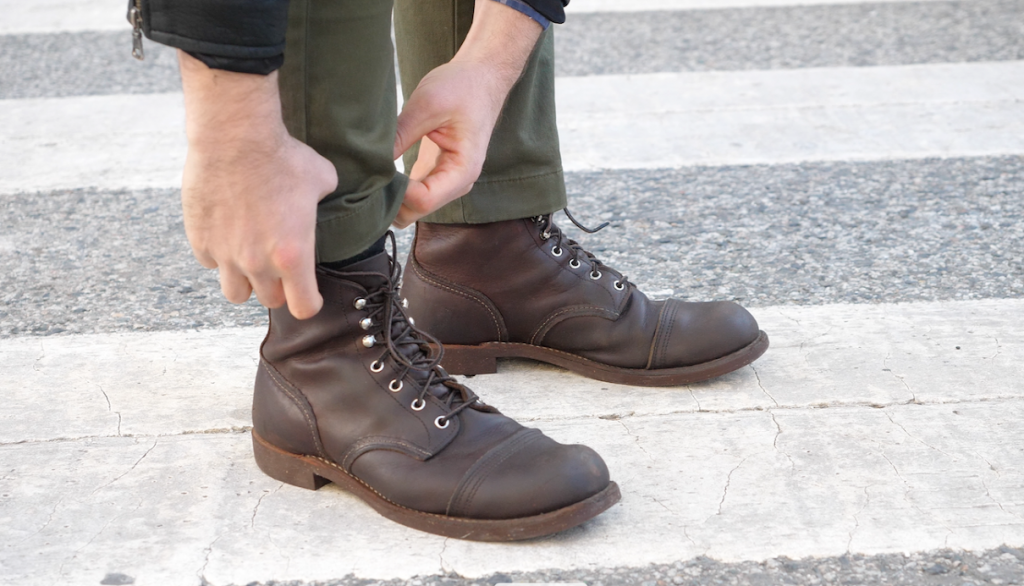
Benefits of Cork Nitrile
- High compressibility, durability, and flexibility
- More grip than leather
Cork nitrile soles are a perfect blend of sleek and resilient. Compared to a leather sole, cork nitrile will feel like it lasts forever. Leather soles breathe well and are very comfy, don’t get us wrong, but there’s much more resilience and durability with nitrile cork.
Nitrile rubber is a synthetic rubber derived from the compounds acrylonitrile and butadiene, and it can be contrasted with natural rubber like crepe. Compared to natural rubber, nitrile rubber (and nitrile cork) is more resistant to oils and acids. It also has superior strength, though inferior flexibility. That said, when nitrile rubber is bonded with cork to make nitrile cork, you’ve got a material that’s both remarkably flexible and durable.
Leather soles breathe well and are very comfy, don’t get us wrong, but there’s much more resilience and durability with nitrile cork.
The compound mixture of nitrile rubber and small pieces of cork help save weight without compromising durability. They offer fantastic oil resistance and with their lack of tread pattern, nitrile cork soles are very easy to clean. If you are someone that takes their dog for a walk in the park and hates having to spend time removing pebbles from between their outsole lugs, then these are for you.
Aesthetically, the soles are a great alternative to leather. They offer the same sleek silhouette as leather but don’t get scratched up the same way a leather sole does. They are also more resilient to changing weather; no need to worry about them getting wet and cracking or falling apart like a leather sole.
[Related: The Pros and Cons of Leather Soles]
Drawbacks
The biggest downside of the cork nitrile soles is cold weather grip. The rubber compound fares surprisingly well in the wet, but as soon as the temperature dips you’ve got two problems: the rubber hardens and you start encountering ice. Neither are ideal.
This isn’t to say there is no grip. They are surprisingly grippy for a pancake-flat surface, especially in the wet. Unfortunately though, cork nitrile soles are no match for snow and ice so fair warning — be prepared.
[Related: The Best Winter Boots That Actually Look Good]
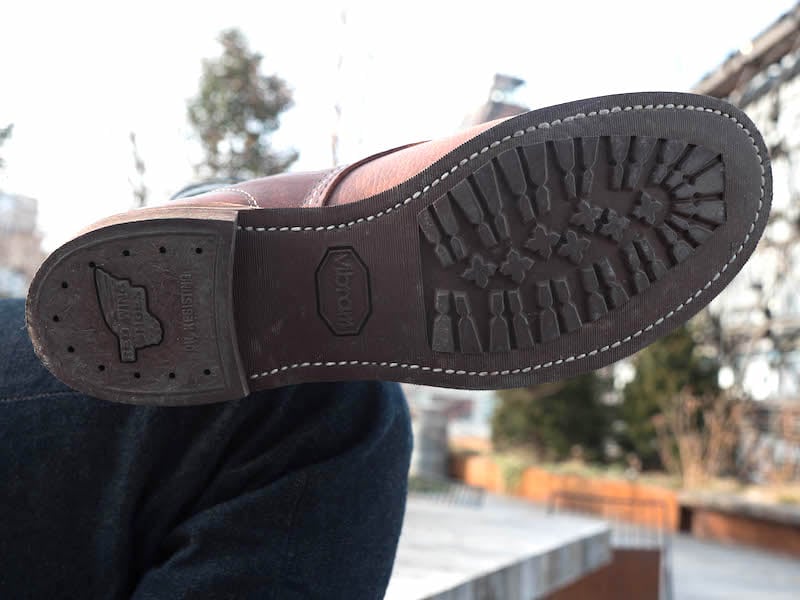
Cork Nitrile vs Vibram Mini-Lug
In 2017, Red Wing Heritage swapped out their cork nitrile soles in favor of the Vibram 430 Mini-lug rubber outsole you can see in the picture above.
These feature a similar sleek design but with a recessed lug pattern on the forefoot.
The move away from Cork Nitrile was met with mixed reviews in the r/GoodyearWelt Reddit community: many felt the lugged sole would suit the Iron Ranger’s work heritage, others insisted the new soles didn’t actually grip that much better and they messed up the boot’s simplicity and aesthetics.
As a Canadian Red Wing consumer, I can attest to the fact that as soon as those debossed lugs get some snow in them, they essentially become a flat outsole and are not any grippier. And the new soles are certainly more of a pain to clean than that smooth nitrile cork was.
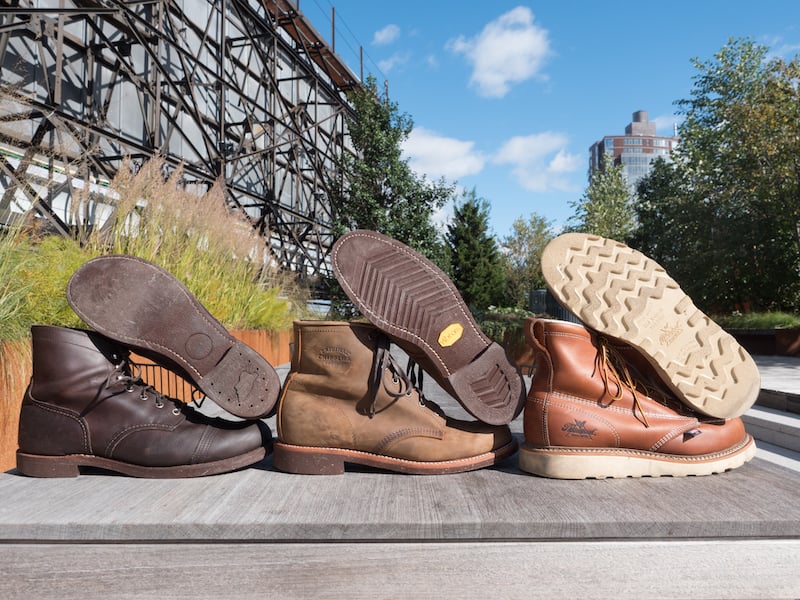
Where Can I Find Cork Nitrile?
Despite Red Wing moving to Vibram soles, there are still some brands selling nitrile cork outsoles.
Alden 403
The best known may be the Alden Indy, an institution in American bootdom that was famously worn by Indiana Jones in all of his movies. You should know that this isn’t technically nitrile cork, it’s Neoprene, so it’s not as oil resistant but it is more resistant to heat.
If you’re able to stomach the price tag of over $600, there’s no competing with this ultra comfortable, New England-made icon.
Dr. Sole
Dr. Sole also offers a full line of cork nitrile soles and half soles with flat bottoms or their patented Supergrip tread pattern. If you are in the market for a resole, reach out to your local cobbler to see what inventory is available to them. Dr. Sole offers a range of colours to help customize your look including off-white, green, black and red brown. Dr. Sole is also a favourite of many Indonesian boot makers.
Conclusion
What soles you use will ultimately depend on how you intend to use your boots and shoes, but if you are looking for a leather sole alternative that will last years, add grip, resist oil, and still look sleek, then a cork nitrile sole may be exactly what you need. Just remember to avoid the ice patches.

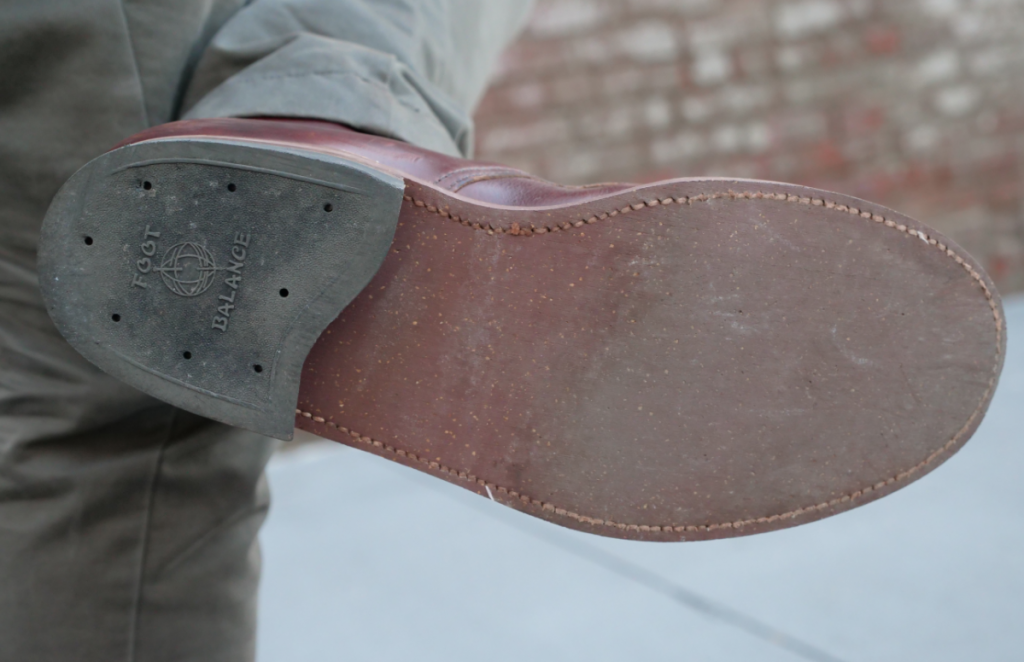

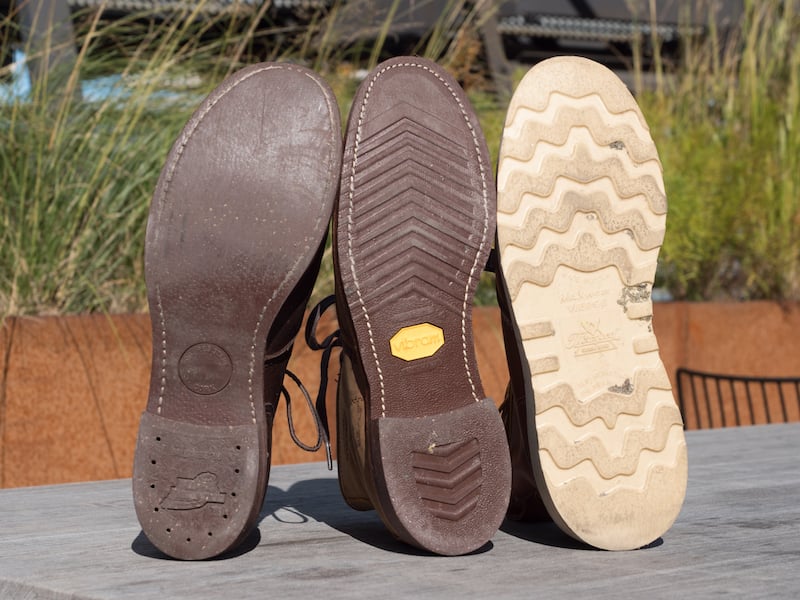

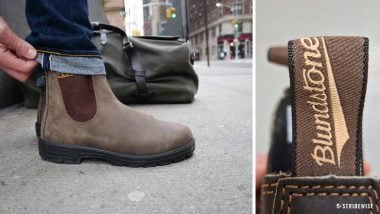
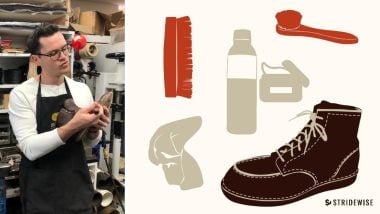



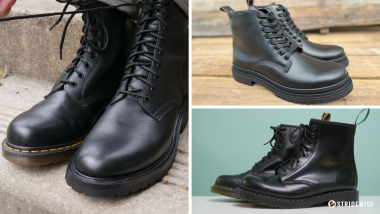


Join the Discussion